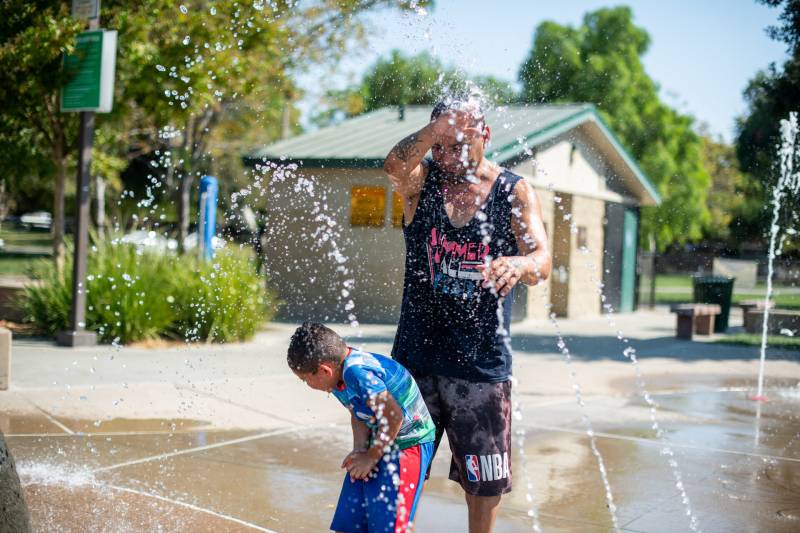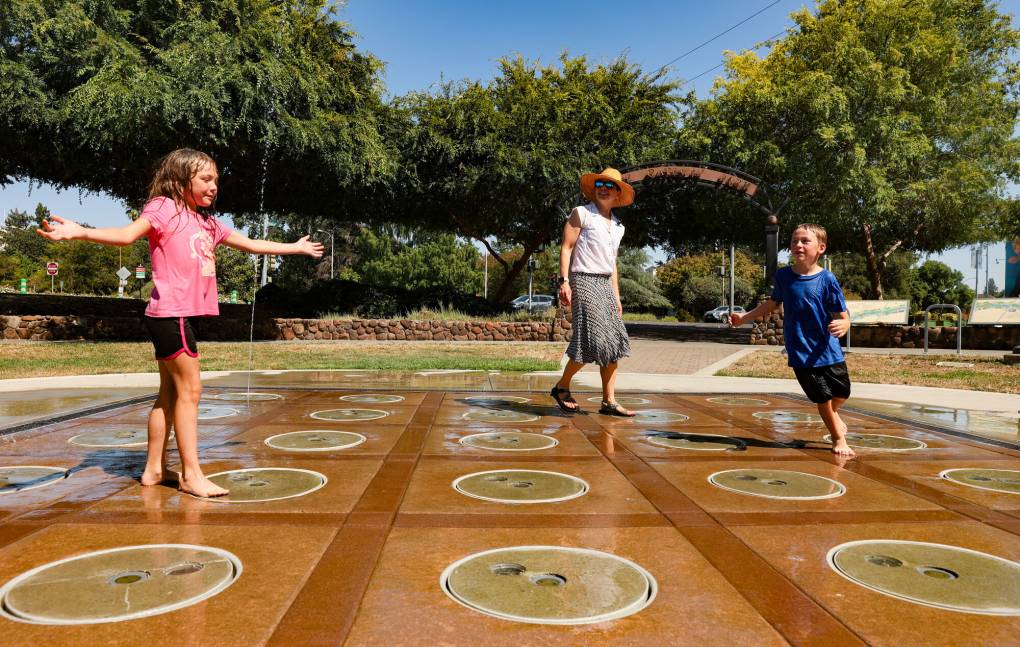Forecasters expect double-digit temperatures in inland areas like Contra Costa County and northern Napa County. The agency has issued a heat advisory for Tuesday through Thursday for interior parts of Napa, Sonoma, Contra Costa and Alameda counties. The weather service said it would likely expand the advisory on Wednesday to include Santa Clara, San Benito, and the far eastern portion of Monterey County.
Source: National Weather Service | Map by Matthew Green/KQED
As of 2 p.m. Tuesday, temperatures reached 91 degrees in parts of San Jose, 93 degrees in San Ramon and Concord, 96 degrees in Sonoma and 100 degrees in Suisun City.
“We will begin to slightly cool off Friday and into the weekend, but it’s still going to be warm,” said Nicole Sarment, a meteorologist at the NWS Bay Area office.
While people flock to the coast for a reprieve from the heat, Sarment warned of the possibility of sneaker waves and suggested inexperienced swimmers stay out of the ocean.
“We tell people to sit and watch the ocean for about 20 minutes before lying on the beach because these waves sneak up on the beach,” she said.
Meanwhile, the California snowpack could drastically dwindle as the heat wave increases temperatures to the upper 80s and low 90s across the Sierra this week.
“The heat wave probably won’t get rid of the snowpack completely, but it will get rid of a lot of it,” said Andrew Schwartz, lead scientist at the UC Berkeley Central Sierra Snow Lab.




